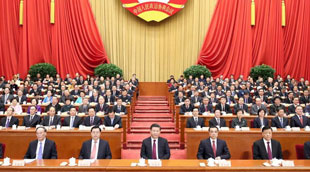
By Peter Nyanzi
Isaya Mulondo worked as a mechanic for construction firms in Kampala for 20 years before he retired at 54. Eight years earlier, he had lost his first wife with whom he had three mature children. He married again and bore two more children.
On retiring, he got his retirement package of Shs 5.5 million from the National Social Security Fund (NSSF). He decided to use half of the money to buy an old car, which he would repair and drive as a special hire taxi. He gave Shs 1 million to his wife as capital for a produce business. The family decided to put Shs 1.5 million on the construction of a block of three rental rooms behind their house in Nangabo, Wakiso district.
The idea was that he would complete the rental rooms using the daily income from the special hire taxi. However, three months afterwards, he fell sick. His daughter, who was living in Europe at the time, sent for him so that he could receive specialised treatment.

But home, things got from bad to worse. His wife used up all her capital for home expenses and school fees for the boys. The car broke down and the construction work stalled at the wall plate. She tried to sell the car but no one was interested. Shortly after, the daughter in Europe lost her job and decided to send the old man back home. His health continued to deteriorate due to lack of the expensive drugs until he passed away two years ago.
No sooner had they buried the old man than the elder children conspired to kick the widow out of the house, which they eventually sold off. Now, for lack of school fees, her two boys might never see the inside of a secondary school. Mulondo’s case is typical of what is at the heart of the liberalization policies that are being lined up for Uganda’s pension sector.
Social security risks
Until now, the National Social Security Act of 1985 has given NSSF the monopoly of catering for the social security needs of employees like Mulondo, while the Pension Fund catered for those in the public service.
According to Dr Jean Barya, an expert in corporate law and who has widely studied the pension sector in the region, a world class social security system should cater for old age, health care, sickness benefit, unemployment, employment related injury benefits, and death benefits. Also, it should cater for family and child support, disability benefit, survivor and orphans benefits and maternity (prenatal, childbirth and postnatal). The NSSF, which has been a monopoly for more than 26 years, caters for only one of these – old age.
The old NSSF aimed at allowing people to accumulate savings plus interest, which they could draw on to use for survival when they were too old to work. Workers and employers have been making mandatory contributions and getting a lump sum payment when a member clocks 55 years.
Over the years, both NSSF and the Pension Fund have not met even these basic expectations because of political interference, corruption, poor regulation and mismanagement.
Rosemary Ssenabulya, the Executive Director of the Federation of Uganda Employers (FUE), says employers and the private sector have generally been bitter and demanded opening up of the pension market.
Four months ago, Parliament finally passed the Uganda Retirement Benefits Regulatory Authority (URBRA) Bill, which sets up a regulator for the pension industry. However, the President is yet to assent to the Act, which means the regulator cannot be set up yet.
New legal framework
The Pension Sector Liberation Bill, which will repeal both the Pension Act and the NSSF Act, has also been tabled in Parliament.
Top among the reforms under URBRA is the segregation of functions, namely; setting up fund administrators, fund managers, trustees and custodians. NSSF, which holds up to Shs 1.7 trillion in member contributions in 8 banks, has been carrying out all these functions as one entity, but will now have to outsource three of them.
However, insiders say, the management of the NSSF funds will pose the biggest challenge.
Since Uganda has few indigenous firms competent enough to handle such huge amounts, the fund manager is likely to be a foreign firm.
“This will erode NSSF’s second mandate which is to contribute to the development of the country,” said an expert on Uganda’s pension sector, “a foreign fund manager will be focused on investing in areas even outside Uganda that ensure a good return.”
Several pension fund managers, mainly from Kenya, operate in Uganda, among them Alexander Forbes, Insurance Corporation of East Africa (ICEA). Kenyan-based based banks like, Kenya Commercial Bank, and CFC Stanbic Investments, that have experience in the sector, are likely to pick interest in Uganda, according to insiders. Some of them were in July named as asset managers for the Kenya NSSF.
There are several other pension schemes that are operating, which will also have to regularise their operations under URBRA. These include Parliamentary Pension Scheme, Civil service pension scheme, Makerere University-Makerere University Staff Retirement Benefits Scheme, British American Tobacco Staff Pension Scheme, Stanbic Bank Staff Pension Fund and Bank of Uganda Staff Pension Scheme.
No social security policy
Dr Barya stresses the need for a “strong regulator” in light of the fact that the mandate of many of Uganda’s regulatory bodies is often interfered with by politicians.
“You need a strong regulator. Someone might abscond and disappear with people’s money. How do you trace him? You need credible institutions to be allowed to join this sector,” he said.
Dr Barya said all the confusion in the social security sector has been caused by the lack of a social security policy to guide the sector, with the government handling pension issues in an “ad hoc manner.”
Also unlike other countries like Kenya, which have a vibrant critical mass of workers organised in workers unions, the confusion in Uganda’s social security system has been compounded by the institutional weaknesses in workers unions. Also, workers unions are sharply divided between NOTU and COFTU, which is undermining the bargaining power of the workers in the country.
Fortunately, the new law also stipulates that any Fund’s capital funds will be separate from members’ savings, which means they cannot be converted into shares. This means new trustees will have to be found.
Privatisation fears
However, the Liberalisation Bill seems to be silent on the trustees for NSSF, which has raised concern that the Fund could be lined up for privatization.
Douglas Opio, the Policy and Research Officer at the FUE, said they want the liberalization law to take care of the legal status of NSSF before the NSSF Act is repealed. Opio suggested that the way the Bill is being handled carries the risk of stoking up worries that NSSF could be sold off.
“By not clarifying the proposed legal status of NSSF, we have to be concerned that they might line it up for sale. Our position is that NSSF should not be privatized,” he said.
Fear of NSSF privatization comes against the background over a long-running battle between the National Insurance Corporation (NIC) and the Makerere university Academic Staff Association’s savings amounting to over Shs 14 billion. The money, deposited while NIC was government owned, became an issue of contention when NIC was privatized. The Makerere staff, under their Staff Deposit administration, wanted to pull out of NIC but have since 2005 failed. Similar fights are likely to erupt if NSSF is privatized.
Monthly stipends
Under the new, NSSF also ceases being a provident fund and because a hybrid provident/pension fund. This means that unlike in the past when members got all their savings in a lump sum, under the new law a member will only get 33% of his total savings when he clocks 45 years, with the 67% being put in a trustee scheme as an annuity. This will be invested and given to members as a stipend on a monthly basis.
Dr Barya says the lump sum arrangement has been unsustainable as it can run out after a short while; after which the beneficiary would go into destitution when he is too old to work hard.
“This tends to defeat the purpose for which social protection arrangements are normally intended, which is ensuring security of income when a person can no longer work,” he said.
Barya said the majority of beneficiaries, who received their money in a lump sum, had used up all of it within three years. On average, an NSSF member gets between Shs 2-3 million on retirement, since the majority of members are low income earners.
The numbers
Under the new arrangement, Mulondo would receive Shs 1.8 million from his savings of Shs 5.5 million with the balance of Shs 3.7 million going into the scheme. At the prevailing bank interest rate of 5%, the money would grow at a rate of about Shs 15,400 per month. If it is anticipated that he will require support for another 10 more years, he would be getting a monthly stipend of about Shs 45,000 per month. If he were to die earlier, the money would still be paid to his family for their sustenance on a monthly basis.
NSSF currently has about 500,000 members who are employed in about 9,000 companies and organisations. Instead of obligating companies with more than five employees to contribute, the new law now requires that every employer regardless of the size must contribute. Barya said this is expected to raise the total number of contributors to about 5 million, who will be shared between NSSF and other schemes. This will yield a combined fund of several trillion shillings – a vast pool of resources for infrastructure and energy development and other large scale projects.
Mad rush
With the sector being opened up for competition, many NSSF members who are already fed up with its inefficiency would want to dash to new entrants with expectations of a better deal. However, the law does not allow NSSF members to close their accounts until five years have elapsed. Also, new members would make mandatory contributions of 5% with the balance of 10% going to a scheme of their choice. Analysts say workers would be better off sticking with NSSF because of its wide experience and the general lack of local pension management skills for new players to tap into. Already, NSSF has several potentially lucrative projects at Temangalo, Nsimbe, Pension Towers, which it is undertaking.
Job losses
NSSF Managing Director, Richard Byarugaba, is remaining calm in the storm. But most observers say that even with his huge war-chest, he needs a leaner, meaner, and smarter organization to survive in the new environment. NSSF’s staff of 500 on whom it spends more than Shs 35 billion per year, need to be whittled down, especially if most functions are outsourced.
“The whole collections department and the various branches must go,” said an expert, “they were only useful when saving with NSSF was compulsory. Now it will be voluntary and organizations will bring in money themselves if the return is good.”
Byarugaba maintains that only “one or two departments would be affected” and that such staff would be assimilated into other value adding functions such as marketing.
NSSF is also broadening its offer with medical benefits, maternity benefits, unemployment benefits, an education benefit, a benefit that allows using savings as collateral to get a loan from the bank to build a house.
Good figures
Byarugaba, a professional banker, is also determined to keep the accounts in the black. According to the income statement for the year ended June 2010, NSSF’s total income stood at Shs 134 billion, up from Shs 76 billion in 2009, most of which was interest income. The rest came from rental (about Shs 5.6 billion) and dividends (Shs 3.8 billion). However, more than Shs 113 billion of the total income was used for administrative and operating expenses or lost through depreciation and amortization, among others, leaving a surplus of just Shs 42 billion. The results look better compared to 2009, which saw NSSF record a loss of Shs 51 billion.
Government clutches
Questions remain as to whether NSSF will move out of the clutches of political oversight, which has largely been responsible for its unpopularity. Currently, the Minister of Finance determines the rate of interest to be paid to contributors every year. Last year, the Fund paid an interest of just 4%, which is way below the bank rate of 5% on saving accounts and the inflation rate of more than 15 %. In effect, workers’ savings at NSSF are being eroded by inflation.
Declaration of interest for 2010 has been delayed and is causing disquiet. NSSF says the Minister of Finance will declare a new interest rate by issuing a Statutory Instrument not later than October 1. Sources said members should not apply now because the interest will be high given the good performance last year. But in the meantime, those who apply before the interest is declared will be paid the mandatory 2.5% interest.
 The Independent Uganda: You get the Truth we Pay the Price
The Independent Uganda: You get the Truth we Pay the Price


